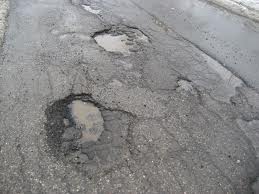Legal Advice: I granted a right of way over my land to a neighbour. He sold the land and my new neighbour is using heavy machinery on the way making the passage full of potholes. What is my position?
A grant of right of way entitles the owner or occupier of the of the land benefiting from the right to pass and repass over the land which subject to the right. This entitlement also includes all that which is reasonable necessary to enjoy the right of way. If rights of way can be classified, they can be either general rights of way ‘for all purposes’ or limited rights of way.
In your case you have granted a right of way by deed of grant. Even if the grant is, as is usually the case ‘ for all purposes’ the grant may be silent as to the use to which the right of way may be put, and in that case all will depend on the intentions of the parties to the deed of grant and the particular physical circumstances when the deed of grant was originally entered into.
So for example if the way ‘for all purposes’ is constructed to be fit for vehicles leading up to a dwelling house and there is a grant of right of way to that dwelling house it would be a right of way for all purposes required for the dwelling house and could thus include the use of cars or vans. If the way ‘for all purposes’ is constructed to be fit for vehicles leading up to a factory or a place used for business purposes which might require heavy materials brought to it, then the grant of right of way would include a right to use it for reasonable purposes sufficient for the purposes of the business and could thus could include use by lorries and industrial equipment. If the way ‘for all purposes’ in question is for example only five feet in width and was a way used simply to access a field with no buildings then it could be for use on foot only and and not for cars or lorries.
There are many varieties of limited rights of way. They can be specifically limited to being on foot, or for horses, carts, cars and lorries, or for agricultural or sporting purposes.
The first thing you need to do is to obtain a copy of the deed granting the right of way. Your solicitor may have a copy. If not you can obtain a copy from the Land Registry as invariably agricultural land in registered in that office. This can be done by inspecting your folio on the Landdirect.ie website.
The right of way will appear on Part 3 of your folio as a burden on your lands. As registered owner you are entitled both to inspect and obtain a copy of the Land Registry Instrument under which the right of way was registered as affecting your land. You then need to ascertain whether it was a right of way for ‘all purposes’ or whether it is a limited right of way.
If the right of way is a general right of way ‘ for all purposes’ consider the original purpose of the right of way.What is the width of the way? Was it to facilitate access to a dwelling, a business, or a field? Was it granted for agricultural purposes only? What use was made of the right of way by your previous neighbour? If it is a limited right of way for example by foot users only then the use by your new neighbour with heavy machinery would seem excessive and outside the terms of the grant. Was the right of way was so constructed as to facilitate access by heavy machinery for the purpose of a business?
If the right of way is a limited right then consider whether or not the use by your neighbour is excessive and outside the terms of the grant. You as owner of the land has as good a right to enjoy the use of the way as your neighbour as long as your user does not obstruct or interfere with his use of it for the purposes of the grant. Thus even if the right of way entitles your new neighbour to use heavy machinery, he is not entitled to use it in such manner as to damage the way and making it full of ruts, potholes and impassable. You are not obliged to maintain it unless this term was included in the grant. On the other hand, your neighbour has the right to repair and maintain the right of way.
So you can see from the above considerations that this area of the law is complex. Your initial course of action should (as always) be to attempt the resolve the matter amicably with your neighbour. Your neighbour has an interest in being able to use the way safely.
If you are unable to resolve matters between yourselves, you will have to obtain legal advices bearing in mind the considerations set out above. If the matter is urgent, your solicitor may advice you to seek an injunction prohibiting the use of the way which is causing the damage. Hopefully legal proceedings will not be necessary. “Jaw Jaw is always better than War War!”
Mr Deeney is a barrister and former Deputy Registrar of Titles in the Property Registration Authority. He now provides Land Registration Consultancy Services and can be contacted by email [email protected].
